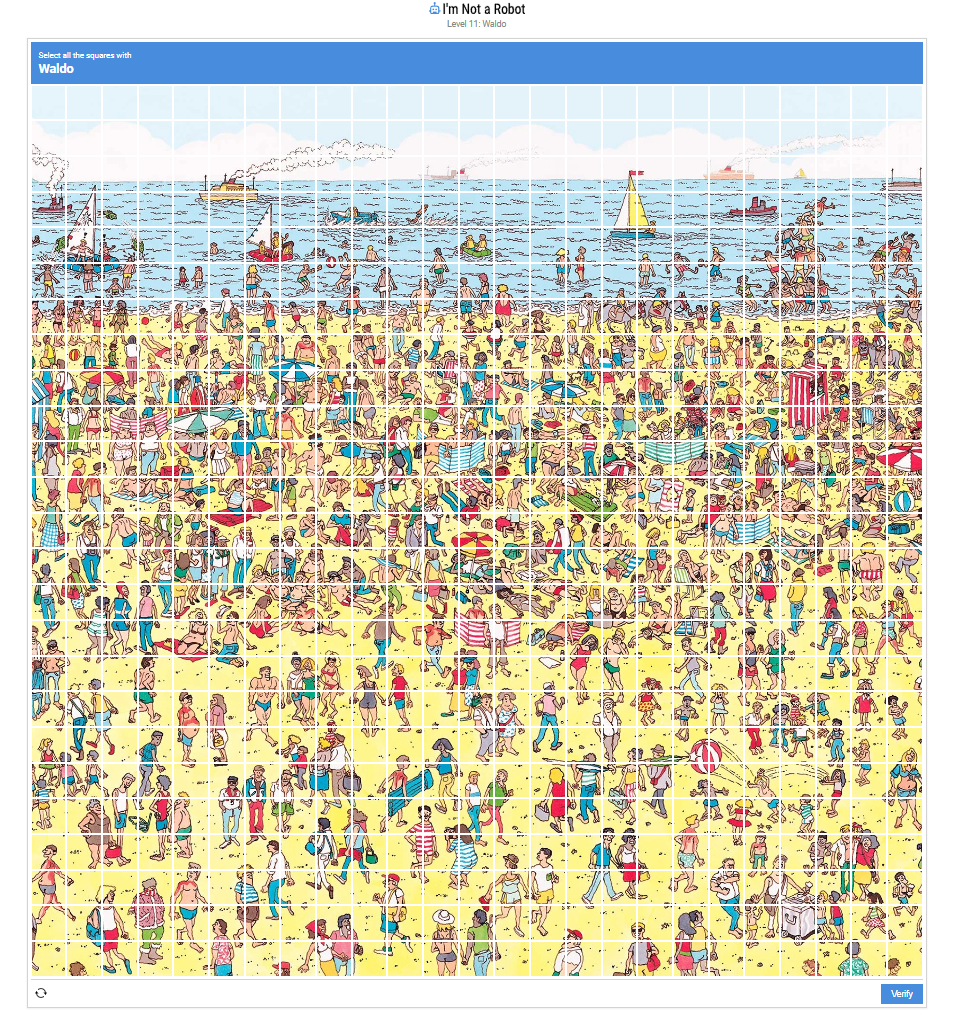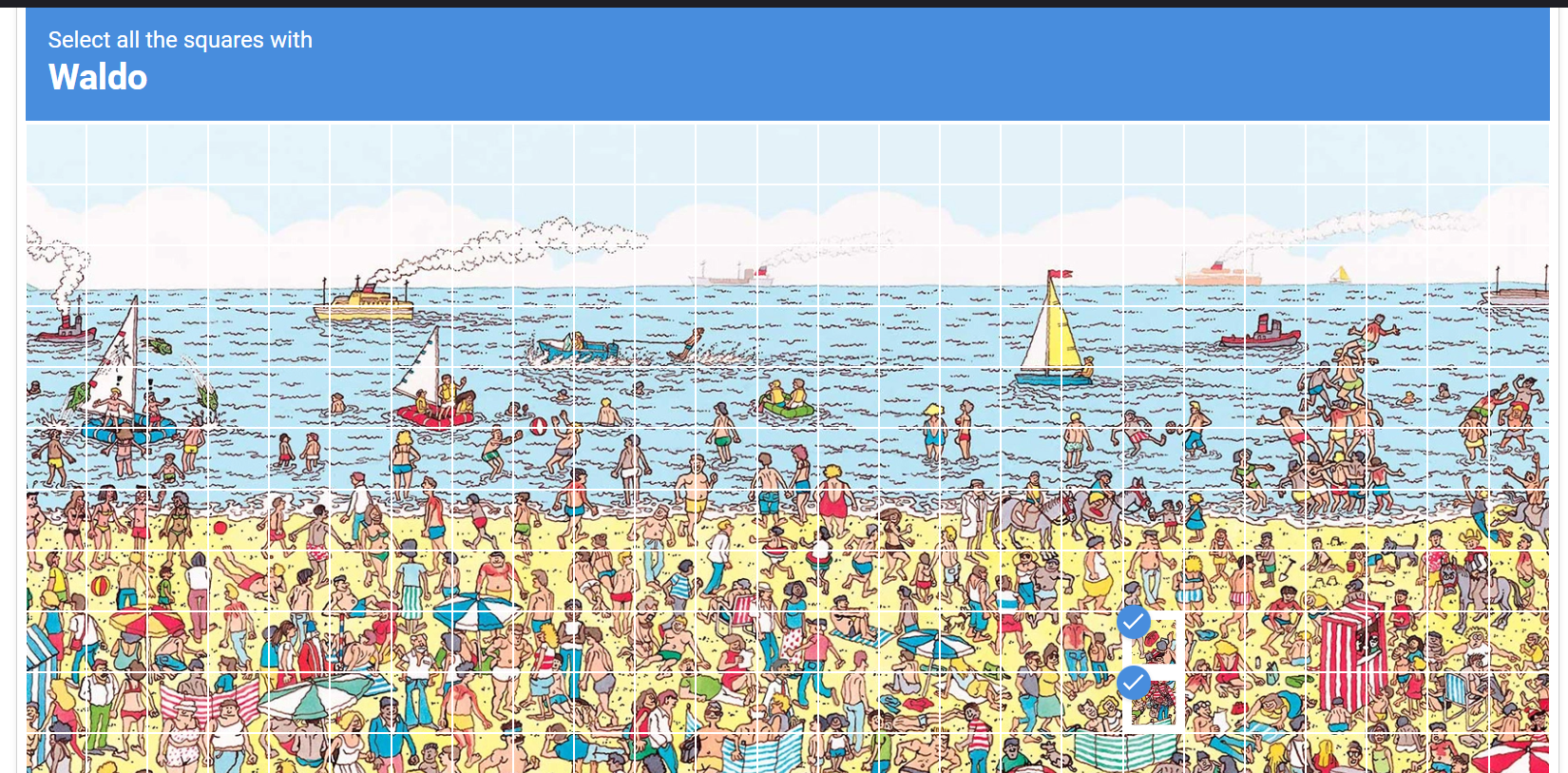How to Beat Level 11 in I'm Not a Robot - Where's Waldo Guide
TL;DR
- Objective: Master Level 11 of Neal.Fun's 'I'm Not a Robot' by locating Waldo in a crowded beach scene.
- Location: Upper right corner area, slightly left of the red and white striped tent, above a light blue towel.
- Identification: Look for red and white striped shirt, round glasses, and distinctive bobble hat.
- Risk: Clicking on similar-looking characters or objects will result in failure and require restarting the search.
This guide provides a systematic approach to conquering Level 11 of Neal.Fun's 'I'm Not a Robot' game, specifically the classic "Where's Waldo" visual search challenge. Players often find this level overwhelming due to the crowded scene and numerous visual distractors. This article breaks down the search process into efficient strategies, ensuring rapid location and successful identification of Waldo's precise position.
Unlocking Level 11: The Where's Waldo Visual Search Challenge Explained
Level 11 of Neal.Fun's 'I'm Not a Robot' game introduces a sophisticated visual search task that tests players' ability to locate a specific target within a complex, crowded environment. Unlike previous levels that focus on pattern recognition or logical reasoning, this puzzle demands sustained visual attention and systematic search strategies to identify Waldo among hundreds of similar-looking beach-goers. The challenge lies not just in recognizing Waldo's distinctive appearance, but in efficiently navigating the visual complexity of the scene while maintaining focus on the search objective.

Level 11 Beach Scene Overview
Mastering Visual Search: A Comprehensive Waldo Location Strategy Guide
The key to successfully navigating Level 11 of 'I'm Not a Robot' lies in implementing systematic search patterns and utilizing distinctive visual landmarks to narrow the search area efficiently. The puzzle presents a detailed beach scene with numerous characters, requiring strategic approach rather than random scanning. Follow these precise steps to locate Waldo with maximum efficiency:
Strategy 1: Landmark-Based Navigation and Target Acquisition
- Objective: Use prominent visual landmarks to establish search coordinates and narrow the target area.
- Procedure: Begin by identifying the red and white striped tent in the upper right portion of the scene. This tent serves as the primary reference point for Waldo's location. Once located, direct your attention slightly to the left of this tent structure. Look for a light blue towel being held by a family group in this area - this towel marks the precise vertical alignment for Waldo's position. Waldo appears directly above this towel, creating a clear spatial relationship between these visual elements.
Strategy 2: Character Recognition and Visual Discrimination
- Objective: Develop systematic identification criteria for distinguishing Waldo from similar-looking characters.
- Procedure: Focus on Waldo's distinctive visual characteristics: red and white horizontally striped shirt, round wire-rimmed glasses, red and white striped bobble hat, and characteristic facial features. These elements remain consistent across all Where's Waldo presentations. Scan the target area systematically, filtering out characters that lack these specific visual markers. Pay particular attention to the striped pattern orientation - Waldo's stripes are horizontal, which distinguishes him from other striped clothing that may appear in the scene.
Strategy 3: Systematic Grid Search and Area Prioritization
- Objective: Implement efficient search patterns that maximize coverage while minimizing time investment.
- Procedure: Divide the beach scene into logical quadrants, prioritizing the upper right quadrant where Waldo is located. Within this priority area, implement a systematic left-to-right, top-to-bottom scanning pattern. This methodical approach ensures comprehensive coverage while preventing the visual fatigue associated with random searching. Maintain consistent scanning speed to avoid missing targets due to rushed examination or excessive dwelling on individual areas.

Level 11 Waldo Location Highlighted
Strategy 4: Precision Targeting and Verification Protocols
- Objective: Ensure accurate target identification and successful completion through precise clicking techniques.
- Procedure: Once Waldo is visually identified, verify his distinctive characteristics before clicking. Ensure that the target displays the complete set of identifying features: striped shirt, glasses, hat, and appropriate positioning relative to the landmark references. Click directly on Waldo's central body area to ensure reliable hit registration. The system requires precise targeting - clicking on adjacent characters or background elements will result in failure.
Advanced Search Techniques and Performance Optimization
- Peripheral Vision Utilization: Develop the ability to detect Waldo's distinctive stripe pattern using peripheral vision while maintaining central focus on systematic scanning.
- Visual Contrast Enhancement: Train your eyes to recognize the specific red and white color combination that distinguishes Waldo from other colorful elements in the scene.
- Landmark Memory: Develop spatial memory for the key reference points (striped tent, blue towel) to enable rapid re-orientation if initial searches are unsuccessful.
- Distractor Filtering: Learn to quickly dismiss visual elements that share some but not all of Waldo's characteristics, improving search efficiency.
Behind the Challenge: Understanding Visual Search Psychology and Cognitive Load
Neal.Fun's Level 11 cleverly implements principles from cognitive psychology and visual search research, creating a challenge that tests fundamental human visual processing capabilities. The Where's Waldo format examines multiple cognitive functions simultaneously: selective attention, visual discrimination, spatial navigation, and sustained concentration. These combined requirements create an engaging puzzle that effectively demonstrates human visual search superiority over automated systems while providing educational insight into visual cognition principles.
The challenge serves as both entertainment and education about the complexity of visual search tasks and the sophisticated processing required for target identification in cluttered environments. Real-world applications of similar visual search principles include medical imaging analysis, security screening, quality control inspection, and user interface design. The puzzle demonstrates how systematic search strategies can significantly improve performance in complex visual discrimination tasks.
Pro Tips for Conquering Visual Search Challenges
Mastering Level 11 and similar visual search puzzles requires developing systematic approaches to complex scene analysis and target identification. These strategies will improve your performance in visually demanding, attention-intensive challenges.
Tip 1: Develop Systematic Search Patterns
- Objective: Implement consistent, comprehensive search strategies that ensure complete scene coverage.
- Details: Establish regular scanning patterns that prevent missed areas and reduce search time. Practice grid-based approaches that divide complex scenes into manageable sections. Develop the discipline to complete each section thoroughly before moving to the next, avoiding the temptation to jump randomly between areas when initial searches are unsuccessful.
Tip 2: Master Landmark-Based Navigation
- Objective: Utilize prominent visual features as reference points for efficient area targeting.
- Details: Identify and memorize key landmarks that can serve as navigation aids in complex scenes. Develop spatial relationships between landmarks and target locations to enable rapid re-orientation. Practice using landmark-based coordinate systems to communicate and remember specific locations within large visual spaces.
Tip 3: Optimize Visual Discrimination Skills
- Objective: Enhance your ability to distinguish target characteristics from similar visual distractors.
- Details: Practice identifying the specific combination of features that define your target rather than relying on individual characteristics. Develop systematic checklists for target verification that ensure complete characteristic matching before selection. Train your visual system to recognize target patterns quickly while filtering out irrelevant visual information.
Tip 4: Manage Visual Fatigue and Attention Sustainability
- Objective: Maintain optimal visual search performance throughout extended search periods.
- Details: Recognize the signs of visual fatigue and implement brief rest periods to maintain peak performance. Practice relaxed concentration techniques that sustain attention without creating visual strain. Develop strategies for maintaining motivation and focus during challenging searches that may require extended time investment.
Frequently Asked Questions About Visual Search Challenges
Players often encounter similar difficulties when tackling Level 11's demanding visual search and target identification requirements. Here are answers to the most common questions:
-
Q1: What should I do if I can't locate the striped tent landmark?
- A1: The red and white striped tent is located in the upper right area of the beach scene. Look for a triangular tent structure with distinctive red and white vertical stripes. If you're having difficulty, scan the upper portion of the scene systematically from left to right until you identify this prominent landmark.
-
Q2: How can I distinguish Waldo from other characters wearing striped clothing?
- A2: Waldo's stripes are specifically horizontal red and white stripes on his shirt, combined with round wire-rimmed glasses and a red and white striped bobble hat. Other striped clothing in the scene will have different orientations, colors, or patterns. Look for the complete combination of characteristics rather than individual elements.
-
Q3: What if I click on what I think is Waldo but the system doesn't accept it?
- A3: Ensure you're clicking directly on the character rather than adjacent areas. Verify that your target displays all of Waldo's distinctive characteristics. If you're confident in your identification but clicking fails, try clicking on different parts of the character (head, torso, hat) to ensure proper hit registration.
-
Q4: Are there any visual tricks or illusions I should be aware of?
- A4: The beach scene contains many visual distractors designed to challenge your search. Be aware of partial characters at scene edges, overlapping figures, and similar color combinations that might initially appear to be Waldo. Always verify the complete set of identifying characteristics before clicking.
-
Q5: How can I improve my visual search speed for similar challenges?
- A5: Practice systematic search patterns, develop landmark-based navigation skills, and train your peripheral vision to detect target characteristics. Regular practice with visual search games and puzzles can improve your baseline search performance and pattern recognition abilities.
Final Summary
Successfully completing Level 11 of 'I'm Not a Robot' requires mastering systematic visual search techniques while maintaining focus on Waldo's distinctive identifying characteristics within a complex, crowded environment. The challenge tests your ability to implement efficient search strategies, utilize landmark-based navigation, and perform accurate target discrimination under visually demanding conditions. Master this level by developing comprehensive search patterns, memorizing key landmark relationships, and maintaining systematic verification protocols for target identification. Remember that patience and methodical approaches are more effective than rushed searching, as accurate identification of Waldo's specific location and characteristics is essential for successful completion.